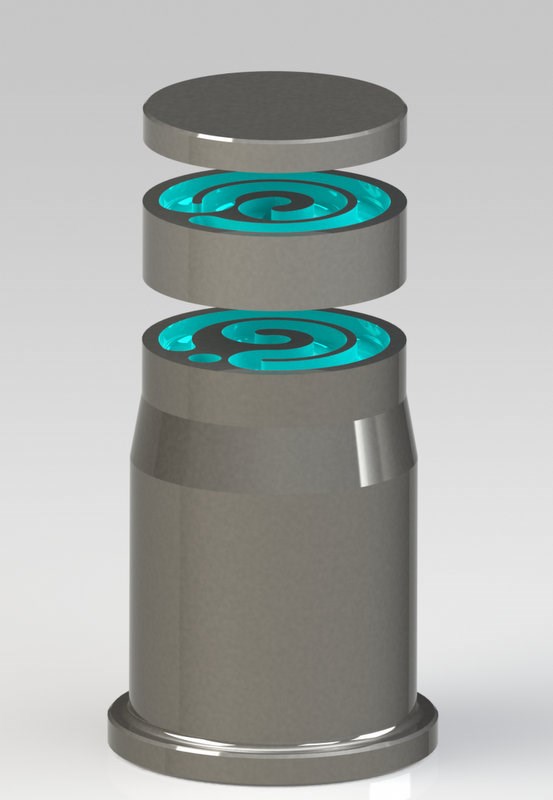Fusing Cores and Cavities
A plate fusion technology that joins manifold plates for hot runner construction is now available to molders and moldmakers to allow them to manufacture conformally-cooled mold cores and cavities. It is said to reduce cycle times in injection molds as much as 60 percent. I thought I'd share some background information as well as some frequently asked questions.
.jpg;maxWidth=600)
A plate fusion technology that joins manifold plates for hot runner construction is now available to molders and moldmakers to allow them to manufacture conformally-cooled mold cores and cavities. It is said to reduce cycle times in injection molds as much as 60 percent. I thought I'd share some background information as well as some frequently asked questions.

This picture is an exploded view of an mold core assembly for a consumer closure application. It is shown separated for clarification. An exclusive plate fusion technology from Polyshot was used to braze the sections back into a one piece assembly. These sections come to Polyshot from the moldmaker as rough "blanks" with the conformal cooling channels already machined into them. After brazing the customer can finish machine the core as any other piece of steel, EDM, jig grinding, milling, drilling and heat treat are done just as they normally would be. The top image shows the completed mold core assembly fused with the conformal cooling channels now embedded into the core. Polyshot share some typically asked questions for fusing cores and cavities:
Question: Can I heat treat the fused assemblies after I get them back?
Answer: Yes, the fused assemblies can be annealed and or hardened by a typical heat treat process. The only limit is the heat treating temperatures should not exceed 1800 degrees F. or 982 degrees C. This typically allows a maximum Rockwell hardness of about 45 RC.
Question: What steel types are acceptable to use with this process?
Answer: H13, 420 Stainless, S7, most of the typical mold steels. Other steels can be reviewed.
Question: How hard are the assemblies after thy are fused together?
Answer: The hardness after fusing can be anywhere form totally soft to about 30RC. This depends on the mass of the assembly to be brazed and the time used to cool them. Many times the customer goes straight to machining after getting the parts and other times the customer introduces a heat treat step before machining. This is either an anneal or a hardening process if they prefer to machine them hard.
Question: How do I prepare plates for brazing? What machining needs to be done to them before I send them?
Answer: Plates to be fused are shipped in the rough finish on the outside of the cores or cavities. The mating surfaces are to be precision ground (surface ground) to a maximum flatness of .0005" (.012mm), to their finished thicknesses. The plates will have the cooling channels machined into them also. Each mating surface will have dowel holes and pins installed to align the plates also. The dowel holes need to be larger than the dowels by .004" (.10mm).
Question: How long does it take to fuse cores and cavities?
Answer: After cores or cavities are received typical turn around time is 2 weeks for small orders to as much as 6 weeks for large multi-cavity programs.















_300x250 1.png;maxWidth=300;quality=90)
